
Machine vision in intralogistics
How intralogistics and automated warehouses can benefit from machine vision technologies
The complexity and speed requirements of logistics tasks are constantly increasing. Product identification and traceability is an increasingly important necessity for many modern producers. Goods are printed, marked, engraved, etched, or labeled with various barcodes, datacodes, characters and symbols to identify contents and provide vital manufacturing information. In addition, more and more goods need to be unpacked, inspected, packaged, and distributed in ever shorter time.
Modern image processing software provides all the necessary methods and technologies for reading characters, codes, and symbols, regardless of how they were applied. Objects can also be identified entirely without codes by visual texture features and color, for example.
Many processes in intralogistics and warehouse automation can benefit from the use of machine vision. Warehouse processes can be partially fully automated with machine vision systems.
Software from MVTec provides all necessary technologies for identification, packaging, and traceability requirements, as well as for many other requirements in automated intralogistics.
Insights into supply chain for intralogistics and warehouse automation
To better understand how exactly machine vision can improve the automation of existing processes in intralogistics, let's look at this process chain that illustrates the steps within the value chain.

Goods receipt
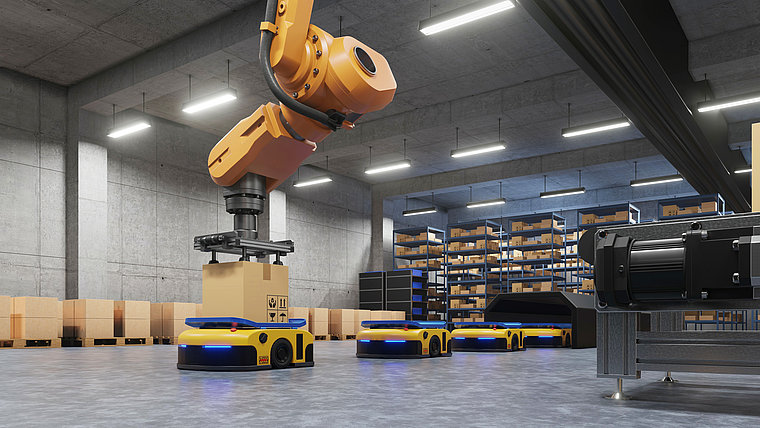
Products usually arrive in boxes on pallets and need to be prepared for storage. First task is to de-palletize the goods onto, for example, a conveyor system. The item must be identified and determined how the part can be handled. Does the item have a hard surface or maybe a soft texture? Is special care needed?
Using 3D technologies, the position and the texture of the goods can be detected. Nowa robot can be guided to pick the single items and place them on a conveyor system.
Another process during delivery of goods is reading and decoding codes for identifying the item. Furthermore, the items quality must be inspected for e.g., transportation damages. Also, the size and volume must be determined to use this information on a later step e.g., during storage. This task can be solved very easily with common 2D camera systems or ready-to-use 2D smart camerasand an modern machine vision software.
Prepare for storage
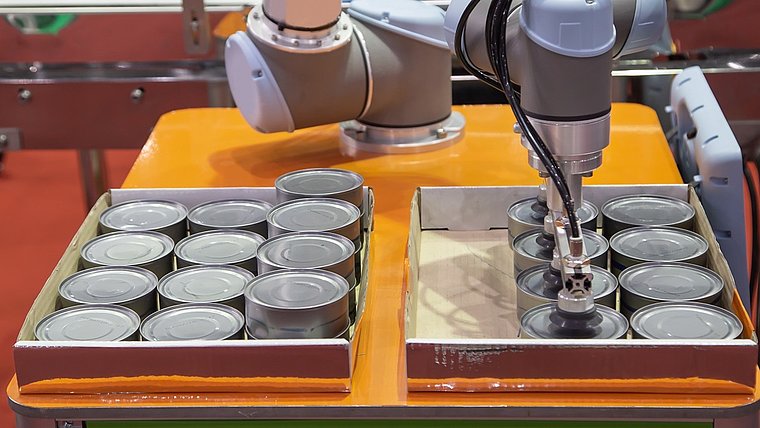
This stage includes unpacking of products, identification of goods and quality control of delivered goods.
Before the goods can be put into storage, an incoming goods inspection must first take place. To check if the quality of the goods is sufficient as well as the completeness of the delivered items.
Usually, a 2D camera takes a picture of the opened box and uses identification algorithms to recognize the contents. The identification can be done either by reading a code, but also with Deep Learning if the objects do not carry readable labels.
Storage – identify shelf slot status
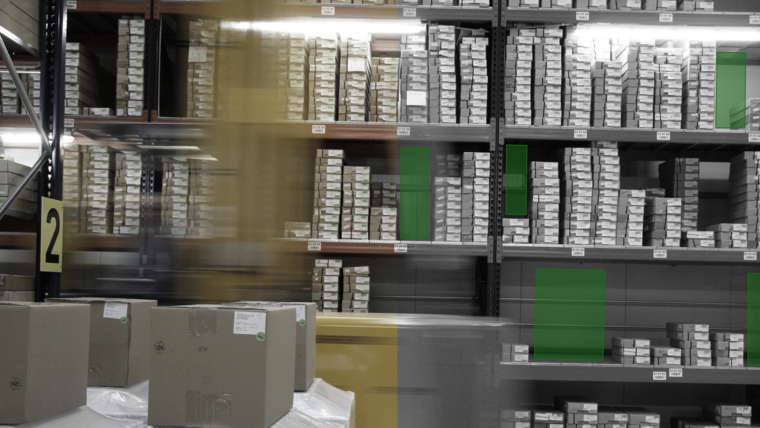
For this application, the storage location and conditions must be known. Where will the goods be stored? Is there enough storage space?
Identification of available empty spaces on the shelf can be performed using Deep Learning, for example.
For this, a mobile robot is equipped with a camera to drive past the shelves and take pictures. The software outputs the free storage spaces and the size of the respective storage space.
Additional information about the location, in turn, can be determined using further machine vision algorithms.
Would you like a personal consultation?
You have a specific project or need more information about the possibilities of image processing software in your warehouse? Contact one of our worldwide distribution partners to ask your questions and get personal consultation.
Retrieving – identify products for issuing
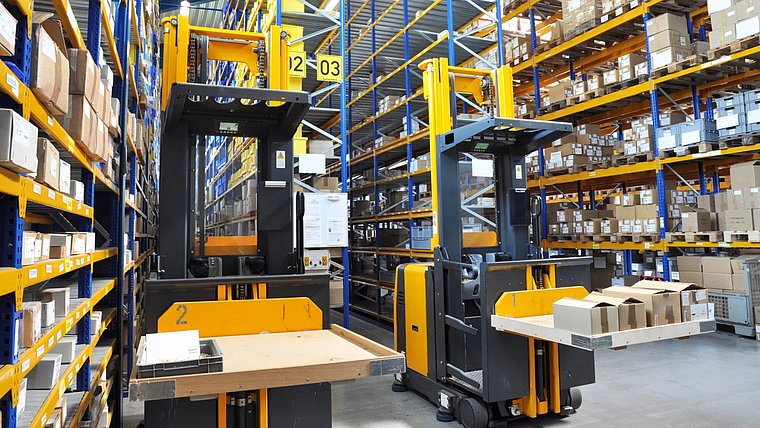
For delivery of the packed or unpacked goods, they must be identified and located before they can be collected as required.
When collecting items from the warehouse, a robot can be used to identify and remove the stored items from the shelves. Basically, it is the same deep learning technology as identifying the empty spaces. The difference is that here usually a larger number of items must be distinguished.
3D sensors could also be used to determine the gripping positions for robots. The combination of deep learning and 3D technologies would lead to a fully automated retrieval process.
Commissioning – measure size and volume for optimized packaging
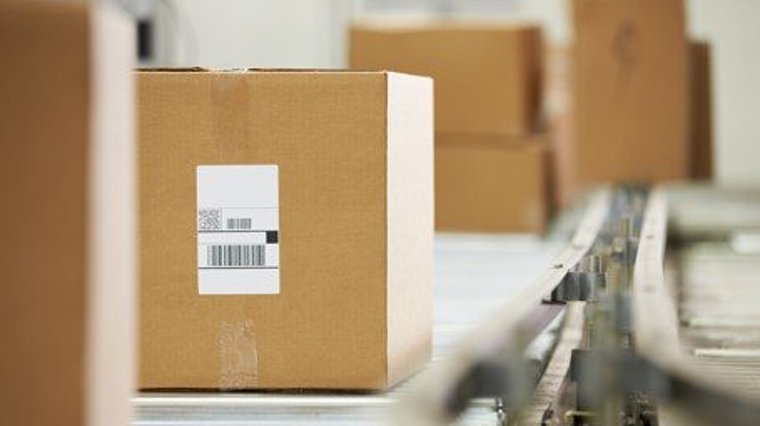
Before the goods are packed, a final quality control should take place to ensure that the product has left the warehouse without damage. Also, the size and volume of the goods can be determined automatically with help of an machine vision system in order to pack everything as efficiently as possible. This saves packaging materials and ultimately costs.
With the help of industrial image processing, it is possible to automatically check which product(s) are contained in a carton, for example, and whether their quality is in order. This information can be forwarded to a barcode printer, which then prints the codes on labels, for example. Another system applies the labels to the cartons. Machine vision is then used to check whether the quality of the printed codes meets the applicable standards (print quality, spacing, etc.), thus ensuring that the code can be read by any standard code reader.
Delivery – goods issue quality control and palletizing
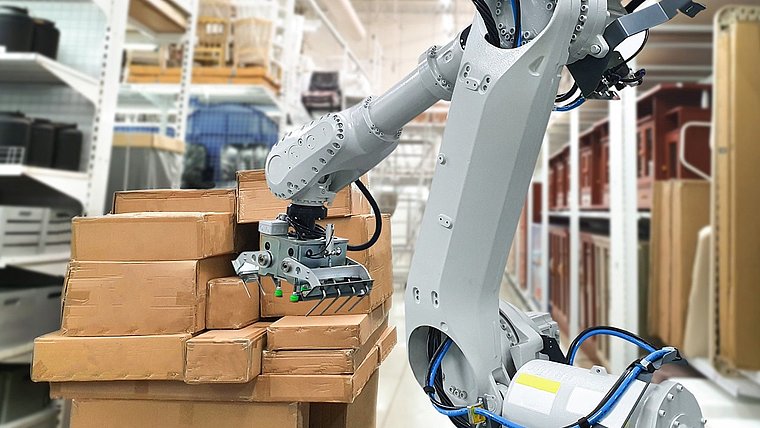
Now the packed goods can be palletized and prepared for delivery.
Using the volume previously determined by industrial image processing, the number of boxes to be palletized can now be determined. This information is used to, automatically and efficiently, stack the boxes on pallets. In addition, the coordinates for automated processing by a robot can be determined based on this 3D information.
Machine vision methods in intralogistics
Surface-based 3D matching & Generic Box Finder
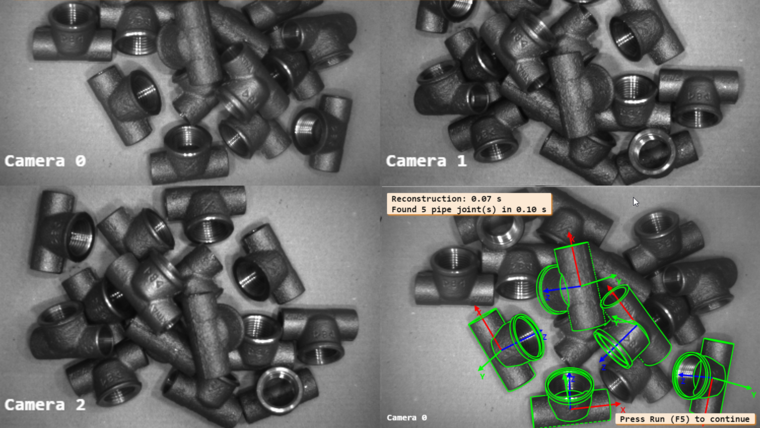
These technologies can be used to identify objects and their position. They are perfectly suited to be used e.g., for depalletizing of boxes or when retrieving objects for commissioning.
Learn more about Shape-based 3D Matching & Generic Box Finder on these pages, where all methods are covered in more detail.
Bar code & data code reading
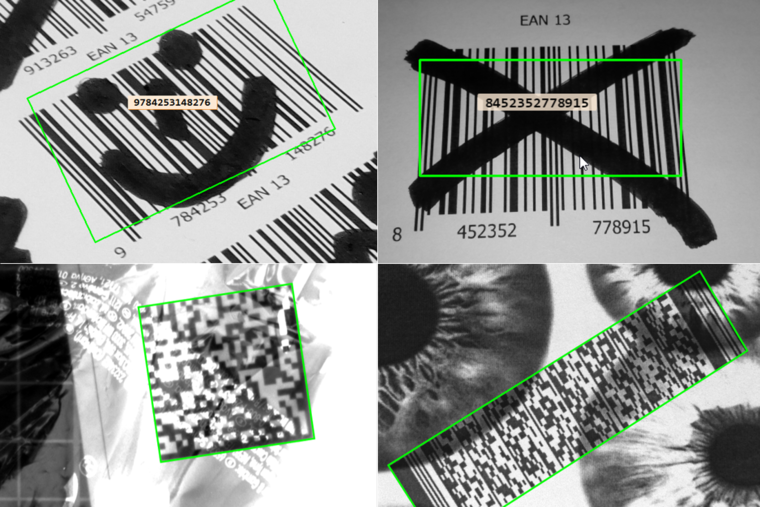
Bar code and data code reading is one of the easiest ways to identify items, so far. There are several different types of barcode and data code available. Both methods faced basically the same challenges as codes can be damaged or otherwise disturbed. Most recent machine vision algorithms tackle these challenges, enabling robust and fast decoding of the information.
Learn how to solve the most common barcode reading problems in our free whitepaper.
Optical character recognition (OCR)
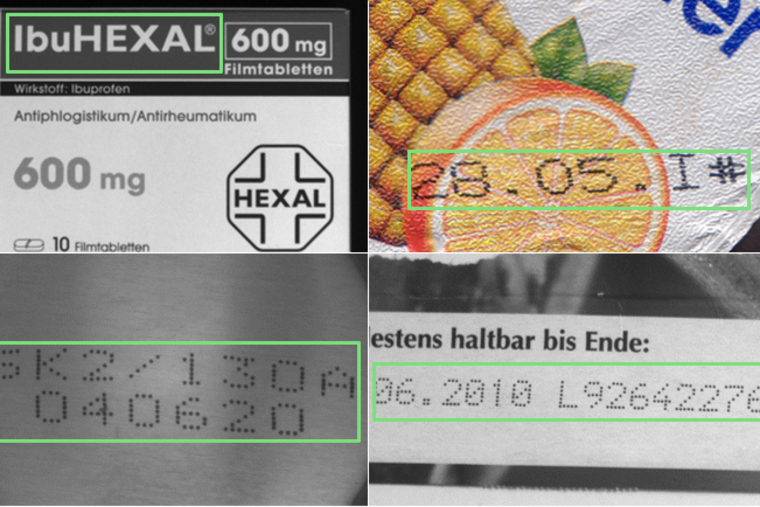
Besides data code and bar codes some items may be equipped with arbitrary labels presenting any kind of text or characters. In such cases optical character recognition (OCR) might be an option to identify items based on text. Such text can come in different fonts, sizes or even printing styles like dot print.
Learn more about OCR with machine vision technology on this page.
Deep learning
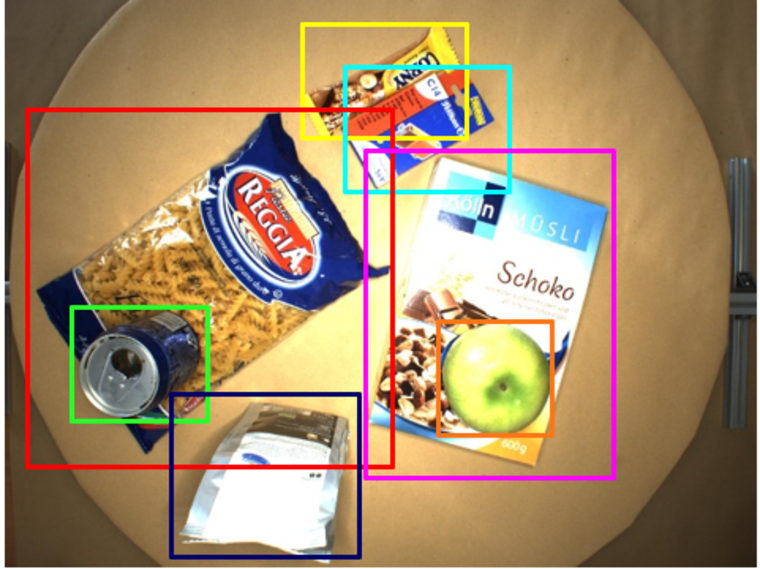
Deep learning helps to identify arbitrary items without codes or labels but is also suitable for quality control, like the detection of defects. It allows new possibilities in inspecting the quality of items. By identifying the item, deep learning enables to determine an optimized handling strategy for goods or items.
Read more about the full power of deep learning methods here.
Need inspiration by practicle examples?
Find out, how our customers use MVTec software for develop highly innovative solutions for intralogistics and automated warehouses.
Free evaluation of your machine vision application
Do you want to know if we have the right solution for your special industry? Send us your software application design and our experts will review it!


